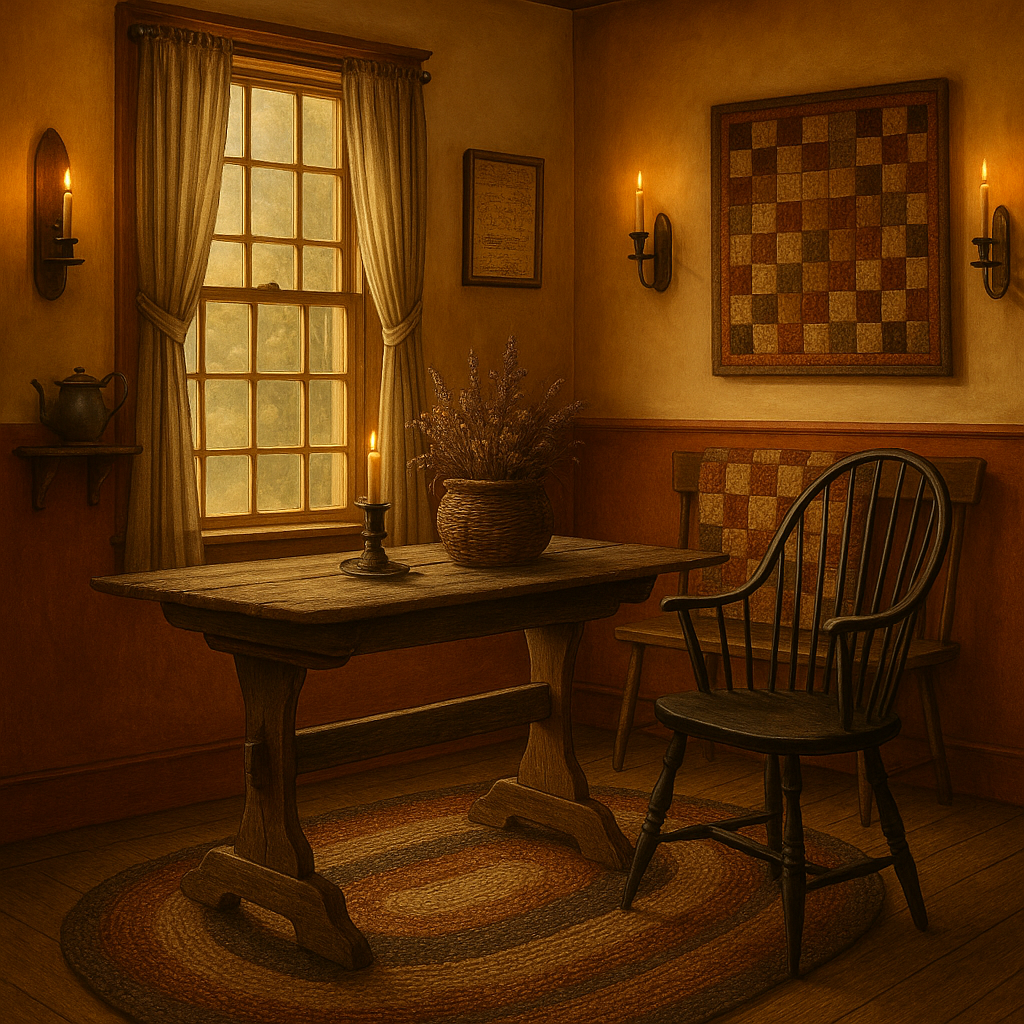
🏡 Colonial vs. Primitive: What’s the Difference in Home Decorating?
🏡 Colonial vs. Primitive: What’s the Difference in Home Decorating?
When you step into a room filled with handcrafted furniture, homespun textiles, and a sense of timeworn beauty, you might wonder—is this Colonial style or Primitive? Both embrace history and authenticity, but they tell their stories in slightly different tones.
Understanding the difference between the two can help you decorate with more clarity, mix pieces more intentionally, and bring even more heart into your home.
🌾 What Is Primitive Decorating?
Primitive style celebrates the humble charm of early American rural life, especially from the late 1700s through the early 1800s. It’s a style deeply rooted in simplicity, utility, and wear.
Key Features of Primitive Style:
-
Distressed finishes: Crackled paint, worn wood, rusted tin, and faded fabrics
-
Folk art and homespun touches: Hand-stitched samplers, blackened beeswax candles, and punched tin
-
Earthy colors: Mustard yellow, barn red, buttermilk, slate blue, and soot black
-
Textiles: Ticking stripe fabrics, braided rugs, and coverlets
Primitive is more rustic, more weathered, and often leans toward a lived-in, well-loved feel. It values patina over polish, and storytelling over symmetry.
🕯 What Is Colonial Decorating?
Colonial style reflects the more refined, formal interiors of early American homes, especially inspired by 17th- and 18th-century English, Dutch, and Federal-era influences.
Key Features of Colonial Style:
-
Heirloom furniture: Queen Anne legs, Chippendale chairs, Windsor armchairs
-
Symmetry and order: Room layouts are often balanced and harmonious
-
Classic colors: Williamsburg blue, sage green, deep burgundy, ivory, and soft gold
-
Materials: Mahogany, cherry wood, polished brass, and fine linen
-
Architectural details: Chair rails, crown molding, and divided-light windows
Colonial style leans more elegant, more structured, and tends to reflect formality and intention in both furniture and layout.
🪑 So… Which One Is Right for You?
You don’t have to choose just one. In fact, many of today’s most charming homes mix Colonial and Primitive styles beautifully, blending the polish of a formal parlor with the coziness of a primitive kitchen.
Here’s a quick breakdown:
| Style | Colonial | Primitive |
|---|---|---|
| Mood | Refined, formal | Humble, cozy |
| Furniture | Queen Anne, Chippendale | Shaker, handmade |
| Colors | Deep, classic hues | Earthy, muted tones |
| Textures | Smooth wood, polished brass | Distressed wood, homespun fabric |
| Decor | Portraits, pewter, lanterns | Samplers, crocks, folk art |
🛒 Shop by Style
Whether you're drawn to the elegance of Colonial interiors or the heartfelt simplicity of Primitive living, we offer thoughtfully curated pieces to help you bring these styles to life in your own home.
-
Explore Our Colonial Home Collection →
Wall art, textiles, and curated goods inspired by the architecture and elegance of early America. -
Shop the Primitive Home Collection →
Canvas prints, handmade-style textiles, rugs, flags, and seasonal accents for a warm, nostalgic space.
In Closing
Both Colonial and Primitive decorating styles celebrate the beauty of the past—but they speak in different tones. One whispers of pewter teapots and candlelit parlors. The other tells stories of hand-hewn benches and saltbox kitchens.
Together, they offer us a way to live more intentionally, more simply, and more beautifully.